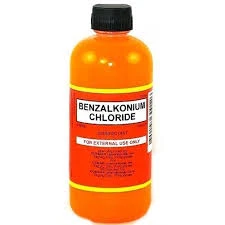chemical coagulation and flocculation water treatment
Chemical Coagulation and Flocculation in Water Treatment
Water is an essential resource for life, serving various purposes including drinking, agriculture, industry, and recreation. However, due to anthropogenic activities, natural water bodies often become contaminated with suspended particles, colloids, and organic matter. This necessitates effective water treatment methods to ensure the safety and quality of water before it is utilized. Among the various techniques employed in water treatment, chemical coagulation and flocculation stand out as crucial processes for removing turbidity and particulate pollutants from water.
Understanding Coagulation and Flocculation
Coagulation and flocculation are two distinct but interconnected processes used in water treatment to remove contaminants. Coagulation involves the addition of chemical coagulants, such as aluminum sulfate (alum), ferric chloride, or pac (poly-aluminum chloride), to water. These coagulants destabilize the suspended particles, which are often negatively charged, thereby neutralizing their charge and promoting aggregation.
Once coagulation occurs, the process of flocculation begins. Flocculation is the gentle mixing of water to facilitate the agglomeration of destabilized particles into larger clusters, known as flocs. These flocs can then be efficiently removed from the water through sedimentation or filtration. The entire sequence—from the initial addition of coagulants to the removal of flocs—plays a vital role in enhancing water quality.
The Coagulation Process
Coagulation can occur in several stages. First, the coagulant is dispersed into water, usually through rapid mixing, which ensures that the chemicals are evenly distributed. This rapid mixing lasts for a short period to prevent premature settling of particles. Next, the water undergoes slow mixing, which allows the destabilized particles to collide, interact, and form larger aggregates. The effectiveness of these processes depends on factors such as pH, coagulant dosage, mixing intensity, and water temperature.
The efficiency of the coagulation process largely hinges on the type of coagulant used and its properties. For example, aluminum sulfate typically requires a pH range of 6.5 to 8 to function effectively, whereas ferric chloride works well across a broader pH range. Meanwhile, the dosage of the coagulant must be carefully calculated; too little may result in ineffective coagulation, while excessive amounts can lead to unnecessary expenses and additional waste.
chemical coagulation and flocculation water treatment

Flocculation Techniques
Once the coagulation stage is complete, flocculation can proceed. This phase usually employs gentle mechanical agitation or mixing through paddles or mechanical stirrers. The goal is to create conditions that encourage the collision and agglomeration of fine particles without breaking apart the fragile flocs that have formed.
Flocculation can be influenced by several parameters, including mixing time, the geometry of the mixing tank, and the type of flocculant used. In some cases, synthetic polymers known as flocculants are added to enhance the flocculation process. These polymers improve the efficacy of the coagulants by bridging small particles together and creating larger, more easily removable flocs.
Applications and Benefits
Chemical coagulation and flocculation have widespread applications in municipal drinking water treatment, wastewater management, and industrial processes. These techniques effectively remove a variety of contaminants, including suspended solids, bacteria, heavy metals, and even some dissolved organic matter.
The benefits of coagulation and flocculation in water treatment are multifaceted. Firstly, these processes significantly enhance water clarity by removing turbidity, which is essential for public health. Secondly, they play a critical role in safeguarding against waterborne diseases by removing pathogens. Lastly, the approaches contribute to the reduction of chemical and operational costs in subsequent treatment stages, like filtration and disinfection.
Conclusion
In summary, chemical coagulation and flocculation are vital processes in effective water treatment. By employing the right coagulants and adhering to optimal operating conditions, these techniques help ensure that our water supply remains safe and clean for all users. As water scarcity becomes a more pressing global issue, it is crucial to continue refining and improving these methods, emphasizing their importance in sustainable water management practices.
-
The Ultimate Guide to Flocculants: Transforming Water TreatmentNewsNov.01,2024
-
Improve Your Water Treatment Solutions with PolyacrylamideNewsNov.01,2024
-
Enhance Your Water TreatmentNewsNov.01,2024
-
Empower You to Achieve the Highest Standards of Water QualityNewsNov.01,2024
-
Effective Scale InhibitorsNewsNov.01,2024
-
Discover the Power of Poly Aluminum Chloride in Water TreatmentNewsNov.01,2024





